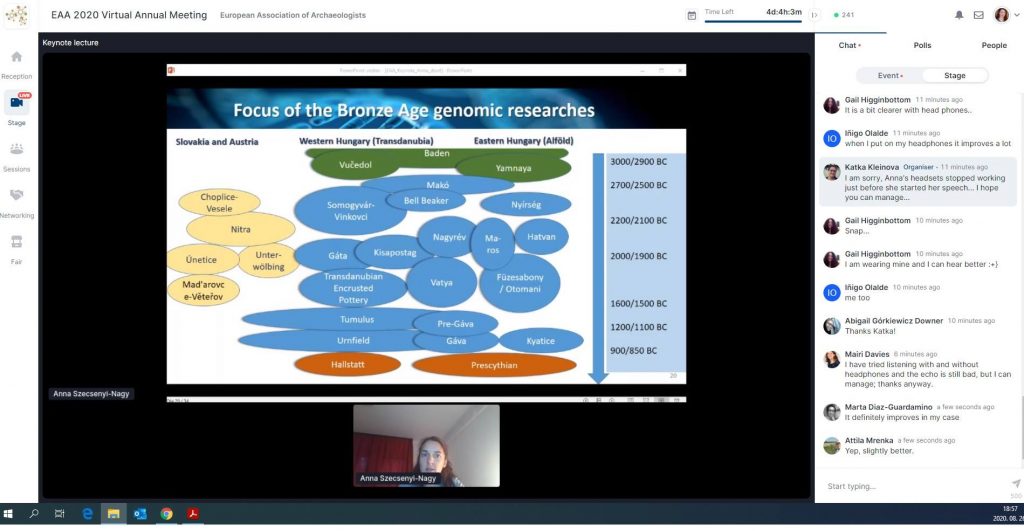Presentations by our research group on Bronze Age archeology at the virtual conference of the European Association of Archaeologists
Conferences of the European Association of Archaeologists (EAA) have been organized year after year in major European cities for the past 25 years. A meeting to be held in Budapest has long been awaited, the organization of which in 2020 was undertaken by the Institute of Archeology of Eötvös Loránd University, the Hungarian National Museum and the Castle Headquarters Integrated Regional Development Centre Nonprofit Private Limited Company. The Scientific Committee of the Budapest conference focused on the role of networking, referring in their motto to the fact that the Carpathian Basin, and the territory of present-day Hungary in its center, played an important role in European history. Another aspect is that the world-famous physicist Albert-László Barabási, who has greatly advanced the research of networks in the last decade, also started his work in this region.
Despite the thorough arrangements, the EAA’s 26th annual conference in Budapest was swept away by the pandemic, and will be possible to hold it again in this city in 2022. Thus, the first virtual meeting of the association took place between August 24-30, 2020.
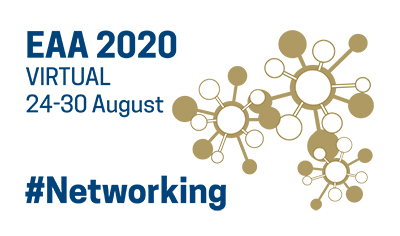
The scientific programme housed 1,800 online lectures and posters in 170 sessions for nearly 2,000 participants. Apart from the technical difficulties and the postponement of some sessions to the following years, thanks to the work of the organizers and the chair of the Scientific Committee, Alexandra Anders, a very high quality event took place in the virtual space.
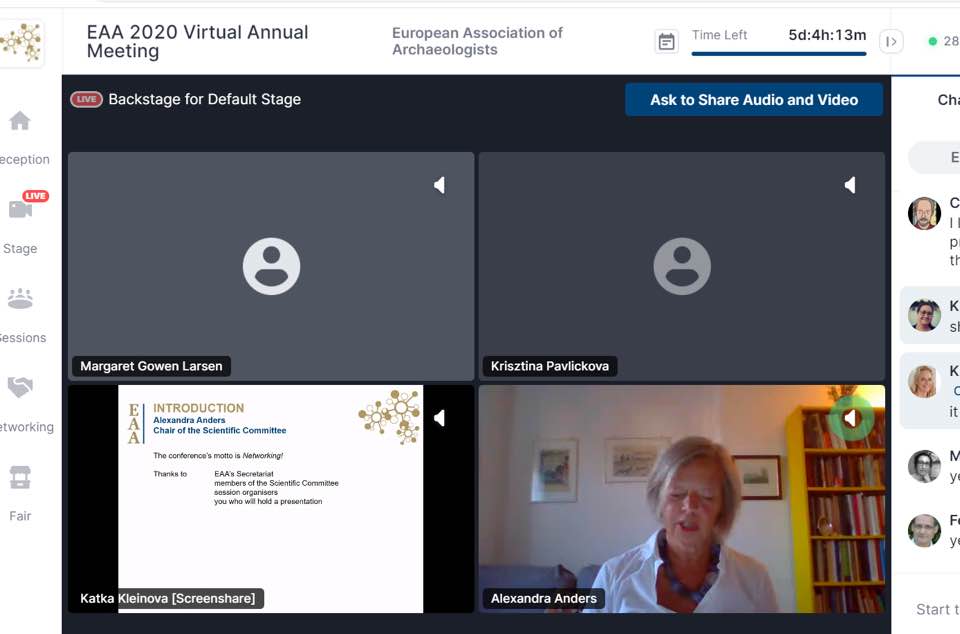
We would like to mention here, among others, the session entitled Networks and mobility in the 3rd-2nd Millennium BCE between the Middle-Danube and the Adriatic area: new ideas and interdisciplinary approaches, which was organized by Claudio Cavazzuti, the guest researcher of our research group (Institute of Archeology, Hungarian Academy of Sciences; Museo delle Civiltà in Rome) and his co-organizers (Alberta Arena, Sapienza Università di Roma; Mario Gavranović, Institute for Oriental and European Archeology OREA, Austrian Academy of Science; Viktória Kiss, Institute of Archeology, Hungarian Academy of Sciences; Mathias Mehofer, Vienna Institute for Archaeological Science – VIAS, University of Vienna).
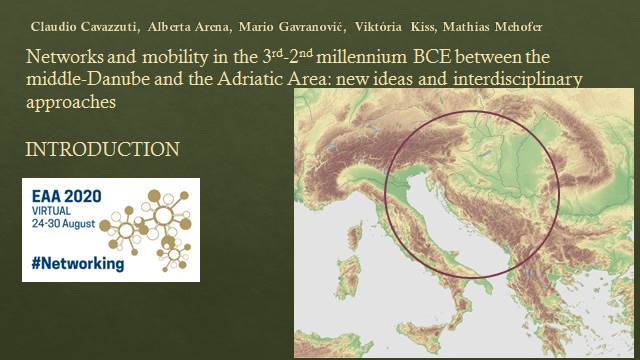
It should also be noted that Anna Szécsény-Nagy was invited to present one of the keynote lectures about Prehistory of the Carpathian Basin from the perspective of archaeogenetics, summarizing the latest prehistoric aDNA data from the Neolithic to the Iron Age in collaboration with our research group.
The virtual conference was very successful, and worked basically well with the often half a thousand users logged in at the same time. There were a number of interesting lectures on the Bronze Age, with forward-looking new archaeological methods, which could be discussed in oral form and in chat, as well as by video workshops. The conference elected the new presidency of the EAA, at which Eszter Bánffy, the first Hungarian president of the organization was voted.
Our presentations and posters with picture gallery:
JÁSZDÓZSA-KÁPOLNAHALOM — AN EMBLEMATIC SITE IN THE HUNGARIAN BRONZE AGE RESEARCH
Kulcsár, Gabriella (Institute of Archaeology, Research Centre for the Humanities) – Gulyás, András (Jász Múzeum) – Kiss, Viktória (Institute of Archaeology, Research Centre for the Humanities) – Serlegi, Gábor (Institute of Archaeology, Research Centre for the Humanities) – Vágvölgyi, Bence (Institute of Archaeology, Research Centre for the Humanities)
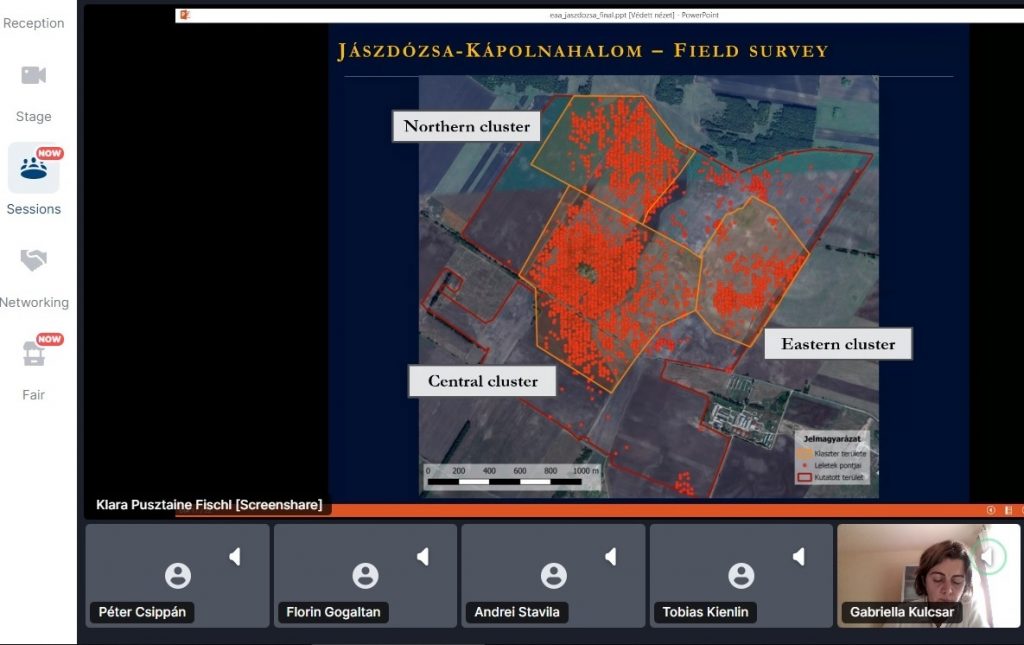
RECONSIDERING EARLY AND MIDDLE BRONZE AGE ABSOLUTE CHRONOLOGY IN HUNGARY
Kiss, Viktória (Institute of Archaeology, Research Centre for the Humanities, HAS) – Csányi, Marietta (Damjanich János Museum) – Dani, János (Déri Museum, Debrecen) – Pusztainé Fischl, Klára (University of Miskolc) – Kulcsár, Gabriella (Institute of Archaeology, Research Centre for the Humanities, HAS) – Melis, Eszter (Várkapitányság Nonprofit Zrt.; Institute of Archaeology, Research Centre for the Humanities, HAS) – Szabó, Géza (Wosinsky Mór Museum, Szekszárd) – Szeverényi, Vajk (Déri Museum, Debrecen)
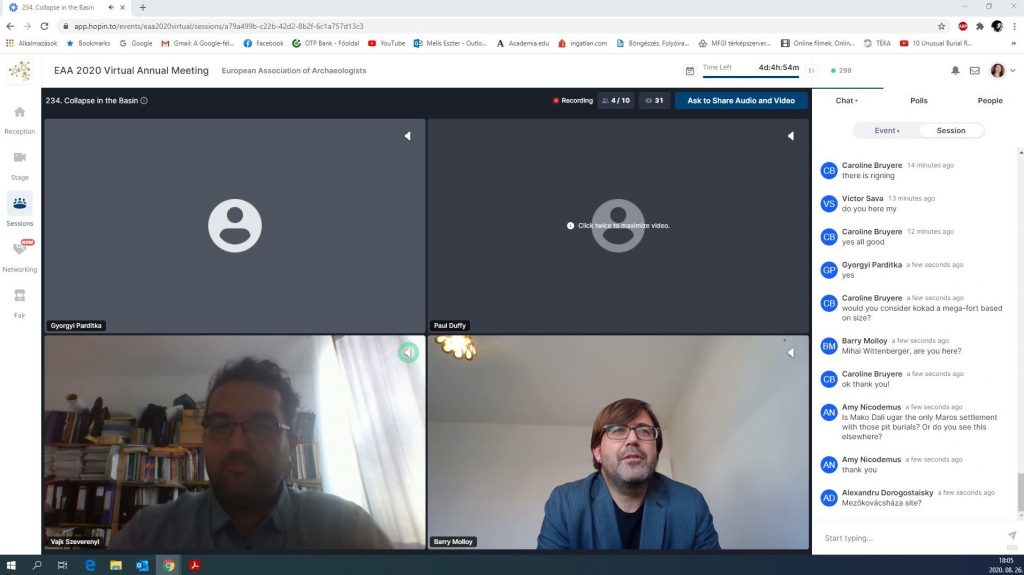
INFERENCES ON ORIGIN AND SOCIAL ORGANISATION OF EARLY AND MIDDLE BRONZE AGE COMMUNITIES LIVED IN THE WESTERN CARPATHIAN BASIN
Gerber, Dániel – Székely, Orsolya – Szeifert, Bea (Institute of Archaeology, Research Centre for the Humanities, Budapest, Hungary; Department of Genetics, ELTE Eötvös Loránd University, Budapest) – Egyed, Balázs – Ari, Eszter (Department of Genetics, ELTE Eötvös Loránd University, Budapest) – Köhler, Kitti – Mende, Balázs (Institute of Archaeology, Research Centre for the Humanities, Budapest) – Fábián, Szilvia (Hungarian National Museum, Budapest)
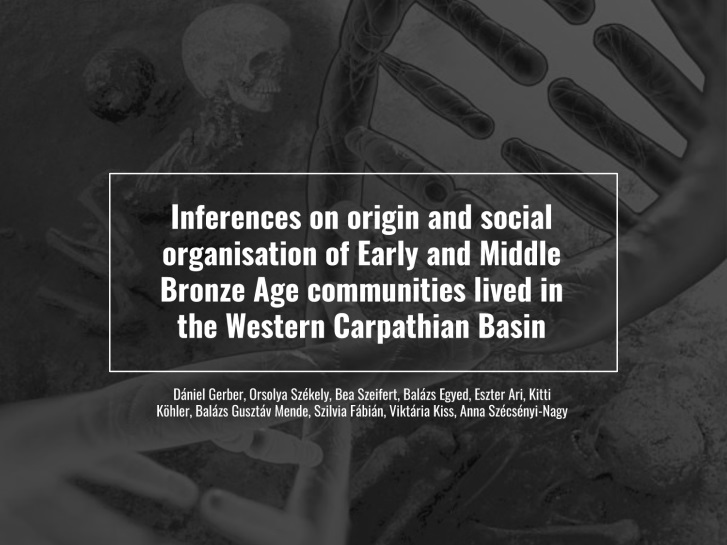
CONTACTS AND MOBILITY BETWEEN THE CARPATHIAN BASIN AND THE TRIESTE KARST BASED ON MULTIDISCIPLINARY INVESTIGATIONS OF THE LJUBLJANA CULTURE POTTERY
Leghissa, Elena (ZRC SAZU, Institute of Archaeology, Ljubljana) – Montagnari Kokelj, Manuela (Department of Humanities, University of Trieste) – Colin, Eugenia – De Min, Angelo (Department of Mathematics and Geosciences, University of Trieste) – Kiss, Viktória (Institute of Archaeology, Research Centre for the Humanities, Hungarian Acad-emy of Sciences) – Prokop, David (CEITEC-Central European Institute of Technology; Brno University of Technology, Institute of Physical Engineering) – Kasztovszky, Zsolt – Szilágyi, Veronika – Harsányi, Ildikó (Nuclear Analysis and Ra-diography Department, Centre for Energy Research, Budapest) – Bernardini, Federico (Centro Fermi, Museo Storico della Fisica e Centro di Studi e Ricerche; Multidisciplinary Laboratory, The “Abdus Salam” International Centre for Theoretical Physics)
PROVENANCE, TECHNOLOGY AND POSSIBLE FUNCTION OF GÀTA-WIESELBURG VESSELS FROM FRIULI VENEZIA GIULIA (NORTH-EASTERN ITALY)
Leghissa, Elena (ZRC SAZU, Institute of Archaeology) – Roffet-Salque, Melanie (Organic Geochemistry Unit, School of Chemistry, University of Bristol) – Kiss, Viktória (Institute of Archaeology, Research Centre for the Humanities, Hungarian Academy of Sciences) – De Min, Angelo (Department of Mathematics and Geosciences, University of Trieste) – Visentini, Paola (Friulian Museum of Natural History, Udine, Italy; Archaeological Museum, Udine Civic Mu-seums) – Prokop, David (CEITEC-Central European Institute of Technology; Brno University of Technology, Institute of Physical Engineering) – Montagnari Kokelj, Manuela (Department of Humanities, University of Trieste) – Bernardini, Federico (Centro Fermi, Museo Storico della Fisica e Centro di Studi e Ricerche; Multidisciplinary Laboratory, The “Abdus Salam” International Centre for Theoretical Physics)
NEW DATA ON THE CHRONOLOGY OF EARLY AND MIDDLE BRONZE AGE IN WESTERN HUNGARY
Melis, Eszter (Castle Headquarters Integrated Regional Development Centre Ltd.; Institute of Archaeology, Research Centre for the Humanities
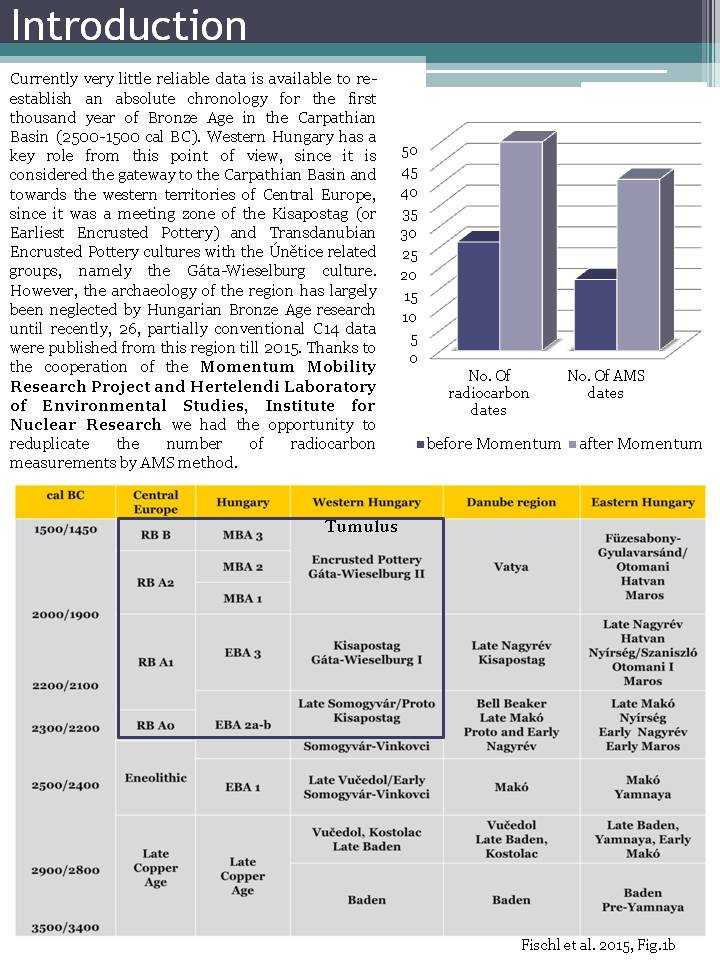
SACRIFICE, (RE)BURIAL, AND THE FRAGMENTATION OF BODIES: HUMAN REMAINS FROM EARLY AND MIDDLE BRONZE AGE SETTLEMENTS IN THE CARPATHIAN BASIN
Szeverényi, Vajk (Déri Múzeum, Debrecen; Institute of Archaeology, Research Centre for the Humanities, Budapest; Institute of Archaeological Sciences, Eötvös Loránd University, Budapest).








